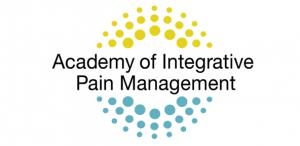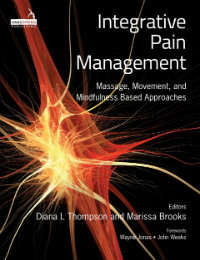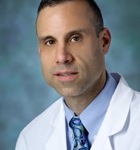New Developments in Integrative Pain Management
September 29, 2016
by John Weeks, Publisher/Editor of The Integrator Blog News and Reports
Consumer interest in “alternative medicine” began 30 years ago with pain. Not surprisingly, much of the most forward leaning exploration of integrative care is in pain management. Here are a few recent developments and resources of note as we continue the move toward a dominant integrative model of pain treatment. AAPM becomes the Academy of Integrative Pain Management Since its founding by a medical doctor-psychologist team, the American Academy of Pain Management (AAPM) has been the most interprofessional of pain societies. Under the leadership of a past president, Rick Marinelli, ND, MAOM, and former executive director Lennie Duensing, the organization began directly identifying itself with the emerging integrative medicine movement. Now, under the guidance of Bob Twillman, PhD, the AAPM has officially adopted a moniker that reflects this distinguishing characteristic. In June, it became the Academy of Integrative Pain Management (AIPM). The organization’s commitment to the field extends to long-time involvement with the Integrative Health Policy Consortium. Well known integrative pain expert Robert Bonakdar, MD is immediate past president and the organization’s current treasurer is a military leader in integrative care, Kevin Galloway, BSN, MHA.
AAPM becomes the Academy of Integrative Pain Management Since its founding by a medical doctor-psychologist team, the American Academy of Pain Management (AAPM) has been the most interprofessional of pain societies. Under the leadership of a past president, Rick Marinelli, ND, MAOM, and former executive director Lennie Duensing, the organization began directly identifying itself with the emerging integrative medicine movement. Now, under the guidance of Bob Twillman, PhD, the AAPM has officially adopted a moniker that reflects this distinguishing characteristic. In June, it became the Academy of Integrative Pain Management (AIPM). The organization’s commitment to the field extends to long-time involvement with the Integrative Health Policy Consortium. Well known integrative pain expert Robert Bonakdar, MD is immediate past president and the organization’s current treasurer is a military leader in integrative care, Kevin Galloway, BSN, MHA.  Publication of Integrative Pain Management: Massage, Movement, and Mindfulness-Based Approaches. The volume is an edited text by the team of Diana Thompson, LMP, a past chair of the Massage Therapy Research Foundation, and Marissa Brooks, LPM, MPH. The two forwards are from Samueli Institute CEO Wayne Jonas, MD and me. Jonas called the compendium of 17 segments from an interprofessional team of authors “a carefully and thoughtfully constructed guide on how to help patients after the drugs have been taken away.” In my forward, I call it “the low hanging fruit … to increase options for practitioners and patients.” It’s a good resource on a critical triumvirate of options.
Publication of Integrative Pain Management: Massage, Movement, and Mindfulness-Based Approaches. The volume is an edited text by the team of Diana Thompson, LMP, a past chair of the Massage Therapy Research Foundation, and Marissa Brooks, LPM, MPH. The two forwards are from Samueli Institute CEO Wayne Jonas, MD and me. Jonas called the compendium of 17 segments from an interprofessional team of authors “a carefully and thoughtfully constructed guide on how to help patients after the drugs have been taken away.” In my forward, I call it “the low hanging fruit … to increase options for practitioners and patients.” It’s a good resource on a critical triumvirate of options.  Surgeon General Urges Practitioner to Sign a Pledge to “Turn the Tide” on Opioids In an unusual move, US Surgeon General Vivek Murphy (pictured left) opened up a new site called Turn the Tide in which he urges practitioners, through an open letter, to “Take the Pledge.” This is a simple 3-step statement that ends: “Talk about and treat addiction as a chronic illness, not a moral failing.” (Note that this strategy is fully aligned with Dr. Potee, in the segment below.) Notably, Surgeon General Murphy says nothing about the potential value of the integrative pain tool kit. This follows similar disregard in a recent CDC guidance on opioids and the Obama strategy, discussed in The Uneven Entrance of Nonpharmacologic Approaches as Tools in the Opioid Crisis.
Surgeon General Urges Practitioner to Sign a Pledge to “Turn the Tide” on Opioids In an unusual move, US Surgeon General Vivek Murphy (pictured left) opened up a new site called Turn the Tide in which he urges practitioners, through an open letter, to “Take the Pledge.” This is a simple 3-step statement that ends: “Talk about and treat addiction as a chronic illness, not a moral failing.” (Note that this strategy is fully aligned with Dr. Potee, in the segment below.) Notably, Surgeon General Murphy says nothing about the potential value of the integrative pain tool kit. This follows similar disregard in a recent CDC guidance on opioids and the Obama strategy, discussed in The Uneven Entrance of Nonpharmacologic Approaches as Tools in the Opioid Crisis.  YouTube Available Lecture from the Front Lines on Addiction and Pain Ruth Potee, MD (pictured right) says she is giving this lecture, Addiction is a Brain Disease, to every audience she can find. Potee has a down-to-earth way of driving home the view that addiction – including to pain medicines - must be treated as a disease. One example: she compares the treatment given a person with a drug overdose following self-abusive behavior to the treatment for a person who has had myocardial infarction following years of abusive poor lifestyle eating and exercise choices. The latter is treated like a king, with a myriad of programs and support surrounding him or her. The former is blamed and discharged as rapidly as possible. The audience for this talk is part of its value. It is a front-line group from the Franklin County (MA) Opiate Task Force. Potee does a compelling job on a complex subject.
YouTube Available Lecture from the Front Lines on Addiction and Pain Ruth Potee, MD (pictured right) says she is giving this lecture, Addiction is a Brain Disease, to every audience she can find. Potee has a down-to-earth way of driving home the view that addiction – including to pain medicines - must be treated as a disease. One example: she compares the treatment given a person with a drug overdose following self-abusive behavior to the treatment for a person who has had myocardial infarction following years of abusive poor lifestyle eating and exercise choices. The latter is treated like a king, with a myriad of programs and support surrounding him or her. The former is blamed and discharged as rapidly as possible. The audience for this talk is part of its value. It is a front-line group from the Franklin County (MA) Opiate Task Force. Potee does a compelling job on a complex subject.  Hopkins Pain Management Leader Supports Integrative Strategies A more favorable view of integrative strategies is present in a recent Clinical Pain Advisor interview: “Johns Hopkins Pain Physician: The Need for an Inter-Disciplinary Approach to Pain Management.” Stephen Cohen, MD (pictured left), the Hopkins director for the division of pain medicine states: “Alternative procedures, like conventional ones, are best done in people with localized pain that fits an anatomical pattern–for example, knee pain from arthritis or pain shooting into the leg from a herniated disc impinging on a nerve root. These might include spinal manipulation or craniosacral therapy for spine pain, acupuncture, Calmare®, and many others.” He also spoke to the value of psychological approaches. Notably, a separate article from the same site speaks to the importance of “Integrating Pain Psychology into Academic Programs, Continuing Education.” Perhaps more notably, the article had not one, but 3 internet ads for opioid manufacturer Purdue Pharma. Comment: The news of the name change at AAPM to AIPM and a title that promotes the “integrative” nature of optimal pain care is excellent. Every time the name is uttered or advertised, the possibility of pain treatment different than regular pharma and related procedures will be become more visible and thus possible. Clearly, Surgeon General Murphy - and the CDC and Obama – are among those who need to have “integrative pain management” drilled into them with the intensity of TV pharma ads if they are to shift off their presently dismissive views of such approaches. Side note: I wrote on the topic of integrative pain research and the lack of consideration in opioid strategies in my recent editorial at the Journal of Alternative and Complementary Medicine: Common Sense: Use All Proven Pain Methods in a Comprehensive Strategy to Prevent Opioid Abuse Building the Case for Integrative Approaches for Long-Term Users. My conclusion: “The currently exclusionary limits remind us that common sense is a characteristic of a whole systems mind, not of a reductive one.” Is this indeed a truism? Thoughts?
Hopkins Pain Management Leader Supports Integrative Strategies A more favorable view of integrative strategies is present in a recent Clinical Pain Advisor interview: “Johns Hopkins Pain Physician: The Need for an Inter-Disciplinary Approach to Pain Management.” Stephen Cohen, MD (pictured left), the Hopkins director for the division of pain medicine states: “Alternative procedures, like conventional ones, are best done in people with localized pain that fits an anatomical pattern–for example, knee pain from arthritis or pain shooting into the leg from a herniated disc impinging on a nerve root. These might include spinal manipulation or craniosacral therapy for spine pain, acupuncture, Calmare®, and many others.” He also spoke to the value of psychological approaches. Notably, a separate article from the same site speaks to the importance of “Integrating Pain Psychology into Academic Programs, Continuing Education.” Perhaps more notably, the article had not one, but 3 internet ads for opioid manufacturer Purdue Pharma. Comment: The news of the name change at AAPM to AIPM and a title that promotes the “integrative” nature of optimal pain care is excellent. Every time the name is uttered or advertised, the possibility of pain treatment different than regular pharma and related procedures will be become more visible and thus possible. Clearly, Surgeon General Murphy - and the CDC and Obama – are among those who need to have “integrative pain management” drilled into them with the intensity of TV pharma ads if they are to shift off their presently dismissive views of such approaches. Side note: I wrote on the topic of integrative pain research and the lack of consideration in opioid strategies in my recent editorial at the Journal of Alternative and Complementary Medicine: Common Sense: Use All Proven Pain Methods in a Comprehensive Strategy to Prevent Opioid Abuse Building the Case for Integrative Approaches for Long-Term Users. My conclusion: “The currently exclusionary limits remind us that common sense is a characteristic of a whole systems mind, not of a reductive one.” Is this indeed a truism? Thoughts?



















SHARE